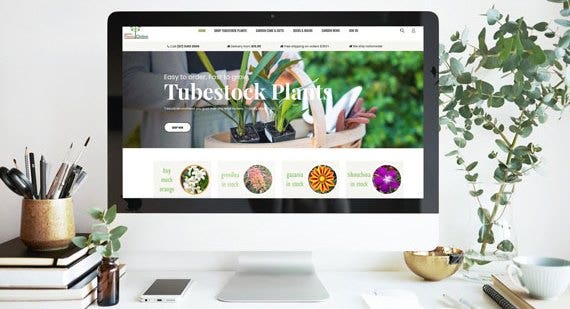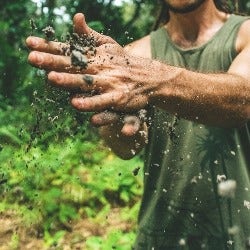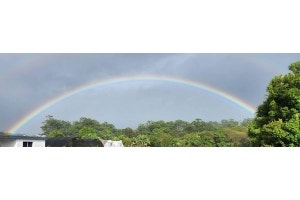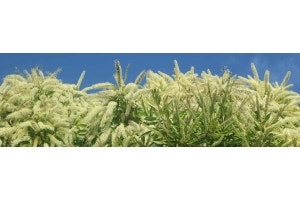
It can be confusing to choose plants for your new garden, especially when faced with the huge choice we have here at Australian Plants Online!
All too often, we choose plants we fall in love with at first sight, or ones we've seen on a television program, without thinking about what those plants would need in order to grow to their full potential. And then our prized new plants struggle, or even die - and we don't know why.The best way to ensure success in your garden for the plants you choose, is to follow our checklist for choosing plants.
Start at the beginning, work to the end, and you'll give your new plants the best chance of growing well and happy.Here at Australian Plants Online we frequently get asked "what are the best plants for Central Coast/Far North Queensland/Inner West Sydney/etc?" You can find our post on this here. It's pretty short, and definitely worth a read if you're new to gardening. We'll wait until you're back! All done?
These might include:
If you know what type of plant it is - a hedge, a tree, a groundcover - you'll find these under Shop All Plants on the menu.
If you know what job you want it to do - bind eroding banks, attract wildlife - you'll find that under Plants For Places.

What are the maximum and minimum temperatures, humidity levels? Where are any pockets of frost or hot sun?

If you squeeze it tight, does it stick together in a lump, clump a little like fresh breadcrumbs, or crumble right through your fingers?Be aware that soil types can change dramatically in only a short distance or depth - so if you are planting a long hedge, for instance, or a large garden, check out the soil in more than one spot.
Do you have :

Select the category of plant you want, under Shop All Plants; or select the particular climate you have, under Plants For Places. Use the filters on the website - at the left on desktop, at the bottom of the screen on mobile - to filter your plant lists by soil type, climate, light and water needs to suit the particular spot they will be planted in. Then you can begin to choose the plants which appeal to you, knowing that they will have the best chance of growing well in your garden. Happy browsing!
All too often, we choose plants we fall in love with at first sight, or ones we've seen on a television program, without thinking about what those plants would need in order to grow to their full potential. And then our prized new plants struggle, or even die - and we don't know why.The best way to ensure success in your garden for the plants you choose, is to follow our checklist for choosing plants.
Start at the beginning, work to the end, and you'll give your new plants the best chance of growing well and happy.Here at Australian Plants Online we frequently get asked "what are the best plants for Central Coast/Far North Queensland/Inner West Sydney/etc?" You can find our post on this here. It's pretty short, and definitely worth a read if you're new to gardening. We'll wait until you're back! All done?
Here's our checklist for how to find the perfect plants for your garden :
1. What do you want the plant to do?
Plants do heaps of things in a garden and can carry out multiple roles. Prioritise one or two for each plant.These might include:
- screen the neighbours or the street
- soften the edges of hard landscaping
- provide some shade
- cover the soil around larger plants
- attract native birds to the garden
- provide food for your family
- add colour in winter
- stop a crumbling bank slipping away
- create a restful green outlook
If you know what type of plant it is - a hedge, a tree, a groundcover - you'll find these under Shop All Plants on the menu.
If you know what job you want it to do - bind eroding banks, attract wildlife - you'll find that under Plants For Places.

2. Where do you want the plant to go?
Plants need three main things to survive - light, food, and water - and the right temperature for them to grow well. What kind of conditions will the plant have, in the place you want to plant it?What are the light levels where the plant will be placed?
- Deep shade all day
- Medium shade for some of the day, sun otherwise
- Dappled shade all day
- Full sun all day
What is the climate in that particular spot?
Check at different times of the day and year, as this might vary.What are the maximum and minimum temperatures, humidity levels? Where are any pockets of frost or hot sun?

- Humid and tropical
- Warm and sheltered
- Windy and exposed
- Hot dry air
- Occasional overnight frosts
- Frost in morning shade which thaws in sun
- Cold winters, regular frosts
What kind of soil will the plant be growing in?
Grab a handful. Does it feel smooth or gritty? Does it smell of dust or moist leaves?If you squeeze it tight, does it stick together in a lump, clump a little like fresh breadcrumbs, or crumble right through your fingers?Be aware that soil types can change dramatically in only a short distance or depth - so if you are planting a long hedge, for instance, or a large garden, check out the soil in more than one spot.

Do you have :
- Heavy clay
- Light sandy dry soil
- Red desert soil
- Coastal sand with salt spray
- Gravelly stony soil
- Rich garden loam, or compost
How much water will your plant get?
- Regular rainfall right through the year
- Some rainfall in the warmer months
- Very little rainfall
- Can you irrigate if the rain doesn't fall?
How long does the water stay in the soil after heavy rain?

- Sits on the top for several hours
- Slowly and steadily trickles through
- Runs through the cracks in summer
- Runs straight through and the soil is soon dry again
What pH is your soil?
You can test this with a simple soil kit. Or look out for hydrangeas in neighbours gardens - blue ones usually indicate acid soil, pink ones alkaline!- Most plants will grow in a reasonably neutral soil, around pH6-8
- Many natives, and shrubs like camellia and gardenia, prefer a slightly acid soil, around pH5-6
- Some vegetables prefer an alkaline soil, around pH8-9
Select the category of plant you want, under Shop All Plants; or select the particular climate you have, under Plants For Places. Use the filters on the website - at the left on desktop, at the bottom of the screen on mobile - to filter your plant lists by soil type, climate, light and water needs to suit the particular spot they will be planted in. Then you can begin to choose the plants which appeal to you, knowing that they will have the best chance of growing well in your garden. Happy browsing!


















